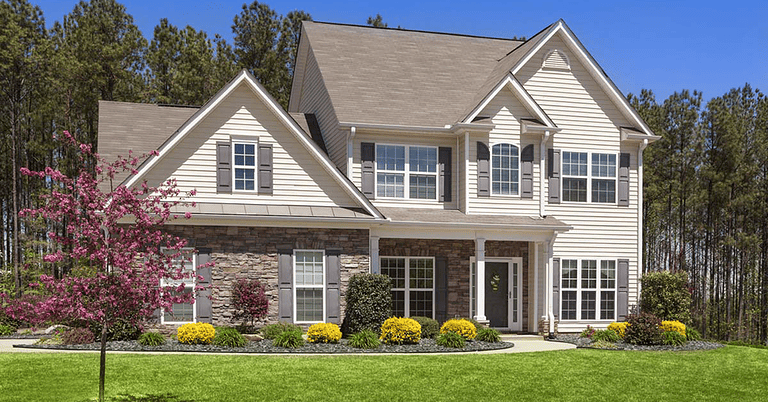How Much Should Deck Boards Overhang
One of the most important considerations when building a deck is how much your deck boards should overhang. Overhanging panels can provide numerous benefits, including better aesthetics and reduced risk of rot and decay. However, there are limitations, such as potential safety hazards if the overhang is too long.
In this article, we will provide you with all the information you need to decide how much your deck boards should overhang. Firstly, it’s important to note that industry professionals generally recommend overhanging deck boards rather than having them flush with the substructure. This adds visual interest and helps prevent water from infiltrating the end grain of the wood and causing rot or decay.
The ideal amount of overhang for your deck will depend on several factors, including the decking material you’re using and its specifications for minimum joist spacing. Proper support for your deck boards is crucial to ensure their longevity and structural integrity. In this article, we’ll cover recommended joist and foot support guidelines and tips for spacing and properly fastening your deck boards.

Deck Board Overhang: Benefits and Limitations
If you want your deck to last longer and look better, you should overhang your deck boards by a quarter inch to an impressive one and three-fourths inches. This not only enhances the appearance of your deck but also protects the substructure from damage caused by moisture absorption. Overhanging also prevents wood splitting that can occur when ends are exposed to weather elements.
Cutting your decking boards so they overlap the edge of your decking provides an aesthetically pleasing finish that hides little imperfections while protecting the substructure.
While maximum deck board overhang varies depending on the material, composite decking typically allows for a 1½ inch overhang. However, limiting overhangs based on design and material type is essential to avoid problems like sagging or splitting.
The amount of overhang determines how much material is available for picture framing around the edges of decks, adding depth and interest to their overall appearance. With these benefits in mind, let’s explore recommended material overhangs. (Read If You Shoot A Propane Tank Will It Explode)
Recommended Overhang for Different Materials
You’ll want to consider the recommended overhang for different decking materials to ensure protection, prevent splitting, and enhance appearance. Here’s a table that outlines the recommended overhang for various decking materials:
| Material | Maximum Overhang | Allowable Overhang |
|---|---|---|
| Wood Decking | 1 3/4 inches | 1/4 inch to 1 3/4 inches |
| Composite Decking | Up to 2 inches, but check manufacturer instructions | Up to 2 inches |
| Composite Fascia Board | At least 1 1/2 inches past the unfinished rim for picture framing | At least 1 3/4 to 2 3/4 inches before installing fascia |
It’s important to note that the maximum allowable overhang may vary depending on factors such as material thickness and joist spacing. Always consult local building codes and manufacturer instructions before determining your deck board overhang. Now let’s move on to guidelines for joist and foot support.
Joist and Foot Support Guidelines
Let’s delve into the guidelines for ensuring proper support of your deck with joists and footings. The first step is to determine the correct spacing for your posts, which will depend on the size and thickness of your deck boards. A standard rule of thumb is to space your posts every 16 inches in the center, but you should always check with local building codes to ensure compliance.
It’s essential to have adequate foot support for your deck structure, which can be achieved by using concrete piers or post bases installed at regular intervals along the length of each beam. When installing deck boards, paying attention to their overhang or flushness with the rim joist is crucial.
Cutting deck boards may seem like a good idea for aesthetics, but it can lead to water damage and wood splitting over time. Overlapping deck boards provide better protection for decking material and substructure while enhancing appearance. It’s recommended that you allow at least 1-2 inches of overhang, depending on the material used and whether picture framing is required.
The maximum distance a board should overhang is one-third its width, as any further can lead to sagging or splitting. Now let’s move on to discussing composite decking overhang.

Composite Decking Overhang
Maximizing your composite deck’s lifespan and visual appeal involves understanding the proper techniques for achieving a balanced overhang. Composite decking overhang should be determined by design, material, and the brand of composite used. Trex is a popular composite material with a maximum overhang of 102mm or around 4 inches, while Envision doesn’t allow for any overhang. Most composite decking tends to have an inch of overhang or sit flush with fascia installed to frame and cover the edges and ends.
To help you determine the appropriate deck overhang limit for your project, we’ve compiled a table below outlining recommended maximums for various decking materials. Remember that picture framing on your deck will require more extensive overhanging decking than usual. Overhanging decking helps prevent moisture absorption, makes cleaning more accessible, and hides the end grain of wood deck boards or exposed substructure underneath composite boards.
| Material | Maximum Overhang |
|---|---|
| Composite Decking | 1-2 inches |
| Trex | Up to 4 inches |
| Wood Decking | 1/4 – 1 3/4 inch |
With these guidelines in mind, you can achieve professional-looking results to ensure your deck lasts as long as possible without running into issues like sagging or splitting. Now let’s move on to the next section about cantilevers and maximum length.
Cantilever and Maximum Length
Achieving a sturdy and safe deck requires careful consideration of the cantilever and how far your lumber can extend beyond the support beams. The maximum length you can cantilever a 2×10 on a deck will depend on various factors, including the species, size, grade, and span of lumber used.
It’s crucial to adhere to local building department guidelines and manufacturer instructions for decking material to ensure your overhang does not exceed recommended limits.
When determining the amount of overhang for your deck boards, it’s essential to remember that extending the length of the deck over the joist should not exceed two inches beyond the edge of the post. This ensures that there is enough support for your deck while also preventing any potential safety hazards from occurring.
Additionally, fascia and endboard options should be considered when planning how much deck board overhang is needed. Proper planning and adherence to recommended guidelines allow you to achieve a beautiful and functional deck that will last for years.
Fascia and End Board Options
The previous subtopic discussed the cantilever and maximum length of the deck board overhang. Explore some fascia and end board options to enhance your deck-building project.
When creating a cohesive and polished look for your deck, fascia and endboards are essential. Fascia refers to the outer covering or edge of your decking structure, while end boards cap off the ends of your deck boards. Overhanging these pieces is essential for protecting the edges of your deck from moisture damage and ensuring a finished appearance. The table below summarizes some options for fascia and end board overhang based on material type:
| Material Type | Fascia Overhang | End Board Overhang |
|---|---|---|
| Wood | 1-2 inches | 1-2 inches |
| Composite | 1½ – 2 inches | Flush with decking |
Remember that extending these pieces too far can lead to sagging or splitting, so follow manufacturer recommendations for proper installation. Adding an outer fascia board with one to two inches of the overhang is ideal for achieving a clean look while protecting the substructure from water damage. With this knowledge about fascia and end board overhangs, you can ensure your deck looks great and lasts longer without any unsightly issues.
Now that you know how much deck boards should overhang for optimal protection and appearance, it’s time to learn more about installation tips and tricks!
Installation Tips and Tricks
Now let’s dive into some installation tips and tricks to help you quickly build a beautiful, sturdy deck.
When it comes to deck building, overhanging the decking is a recommended practice that provides both aesthetic and practical benefits. Decking should overhang the frame by 1-2 inches to protect the substructure, prevent moisture absorption, and make cleaning easier. As a general rule of thumb, the first deck board should overhang the joists by 1-2 inches, depending on the type of wood used.
Before starting your project, it’s always important to check with your local building department for specific guidelines.
When installing deck boards, start from the outer edge of your deck and work inward. Use sliding bevels to determine angles for railing posts, transfer those angles to your deck board using a pencil or chalk line, then cut accordingly using a saw. Allow for an equal amount of overhang per board before nailing or screwing them. Use spacers between boards to ensure uniform gaps while prying them parallel with chisels and levers.
Use 3-inch nails, or spiral galvanized nails for softwood lumber, while cedar and pressure-treated lumber require different fasteners. Once installed, set all screws/nails below the surface of your decking material before filling holes with external wood filler.
With these tips, you can make your deck-building experience more enjoyable while achieving professional-looking results! Moving forward, we will discuss spacing and fastening deck boards. (Read Wasp Bomb For Under Deck)
Spacing and Fastening Deck Boards
Let’s look at how to space and fasten your decking boards for optimal results on your deck-building project! Proper spacing and fastening of deck boards are essential to building a durable, attractive deck that lasts years. Regarding spacing, the general rule is to leave approximately 1/8 inch between each panel. This allows for proper water drainage and expansion and contraction of the wood or composite material.
One way to achieve consistent spacing is using spacers between each board during installation. Additionally, it’s essential to properly fasten each board with screws or nails appropriate for the type of decking material being used. Be sure to cut ends cleanly and avoid exposed cut ends whenever possible. Overhanging the boards can help protect them from moisture absorption and provide a clean finished look. It also offers the necessary material to prevent splitting in wood decking while hiding imperfections in the rim joist. Lastly, adding a fascia board can be an option if you want your board overhang hidden away.
Moving on to low-level decks with overhang…
Low-Level Deck with Overhang
To create a low-level deck with a stylish look, you might consider extending the decking boards beyond the substructure to protect it from moisture and add structural benefits. How much should the deck boards overhang?
The amount of overhang varies depending on the material and design of your deck. However, as a general rule, the decking should overhang the deck’s outside edge by 1-2 inches for aesthetic and practical reasons.
Here are some additional tips to ensure that your overhanging decking looks its best:
- Make sure the deck board overhang is consistent with the stair-nosing overhang
- The amount of overhang should not cause potential problems like sagging or splitting
- Overhanging decking creates a slight shadow on top of the rim joist that’s pleasing to the eye
By following these guidelines, you can extend your decking past your substructure to add visual appeal while protecting your deck. With proper planning and installation, your low-level deck will look better with overhanging decking consistent with industry recommendations.
There are several factors to consider when considering the storage and orientation of composite decking materials.
Storage and Orientation of Composite Decking
As you prepare to store and orient your composite decking materials, imagine yourself carefully arranging puzzle pieces to create a beautiful picture that will last for years. Composite decking is known for its durability, but proper storage and orientation are crucial to maintaining its integrity. Before beginning installation, it’s essential to ensure that your deck boards have been stored correctly and are acclimated to the temperature and humidity of their environment.
To help you determine how much deck boards should overhang, we’ve provided a table below with recommended overhang distances based on the species of wood or composite material being used. While the deck’s outside edge may look better with overhanging boards, it’s also essential to ensure that your decking is consistent with the stair nosing and won’t cause any potential problems like sagging or splitting. Check with your local building department for acceptable guidelines before beginning construction.
| Material | Overhang Distance |
|---|---|
| Pressure-treated lumber | 1/4″- 1 3/4″ |
| Cedar | 1/4″- 1 3/4″ |
| Composite | Up to 2″, depending on the brand |
Why overhanging decking is ideal will be discussed in more detail in the next section about maximizing the benefits of deck board overhang.

Why Overhanging Decking is Ideal
Now that you know how to properly store and orient your composite decking products, let’s discuss why overhanging decking is ideal.
First, an overhang of 1-2 inches off the edge of the frame is pleasing to the eye and practical. It helps prevent moisture absorption and makes cleaning easier. Additionally, this overhang provides the necessary material to prevent splitting in wood decking.
Regarding composite decking, most brands allow for a maximum overhang of 2 inches. However, it’s essential to follow the recommendations of the brand’s instructions as some may have different limitations based on their design and material.
Generally, an overhang between one and two inches of deck board is ideal when attaching an outer fascia board. Overhanging deck boards offer a consistent and cohesive feel to your deck project while ensuring uniformity in the finish.
Ensure that your boards can overhang parallel to the house without exceeding 2 inches past the edge of the joist for optimal support from your frame. (Learn How To Clean White Doors)
Frequently Asked Questions
How does the deck board overhang affect the weight capacity of the deck?
Deck board overhang can affect the weight capacity of the deck if it exceeds the recommended limit. Joist overhang should be limited to a 2-1 ratio to prevent pulling up and off. Additional support is needed for overhanging boards longer than 24 inches.
Can overhanging deck boards cause tripping hazards?
Overhanging deck boards can create tripping hazards if they extend too far beyond the joists. A good rule of thumb is to limit overhang to no more than 1/3 the width of the board and never exceed 2 inches past the edge of the joist. Proper installation and maintenance can also prevent potential tripping hazards.
What is the recommended spacing between decking boards for different types of lumber?
The recommended spacing between decking boards depends on the type of lumber and its moisture content. For wet lumber, a gap of 1/8 inch or the diameter of a 3-inch galvanized finishing nail is ideal to allow water to escape and prevent pooling.
How does the angle of the deck affect the amount of overhang needed?
To determine the amount of deck board overhang needed based on the angle of the deck, first consider material and picture framing requirements. Then, follow best practices for deck board support and limit joist overhang to a 2-1 ratio to prevent pulling up and off.
Are there any safety regulations to consider when designing a deck with an overhang?
When designing a deck with an overhang, it’s essential to consider safety regulations. The amount of overhang should not exceed 1/3 the width of the board, and the joist overhang should be limited to a 2-1 ratio to prevent pulling up and off. Proper support is crucial for safe construction.
Conclusion
Congratulations! You now have a solid understanding of deck board overhang and its benefits. You can create a beautiful and functional outdoor space by following the recommended guidelines for different materials, ensuring proper joist and foot support, and correctly spacing and fastening your deck boards.
Think of your deck like a canvas waiting to be painted. With the right tools, techniques, and expertise, you can turn it into a masterpiece that’ll not only enhance the beauty of your home but also provide an enjoyable space for you and your loved ones to relax in.
So take on this project confidently, knowing you have the knowledge to make it great!







